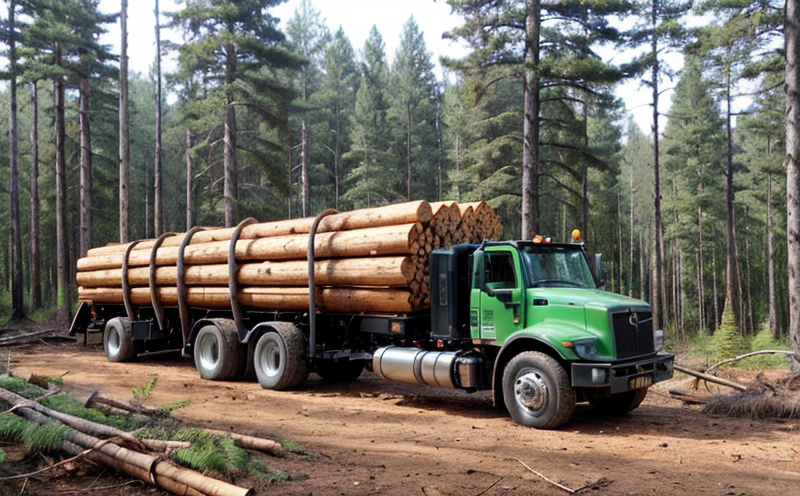Treated Wood Corrosion Effect on Metals Testing
In the realm of agriculture and forestry testing, the impact of treated wood on metals is a critical factor that influences product performance, durability, and environmental sustainability. Treated wood is widely used in various applications including fences, poles, utility poles, and structures exposed to weather conditions due to its inherent resistance to decay, insects, and fungi.
However, when treated wood comes into contact with metallic components such as nails, screws, or connectors, it can cause corrosion. This effect is primarily attributed to the preservatives used in the treatment process, which include copper-based compounds like creosote, pentachlorophenol (TCP), and alkaline copper quat (ACQ). These chemicals have a high affinity for moisture and can accelerate the corrosion of metals.
The testing of treated wood's effect on metals is essential to ensure structural integrity, longevity, and compliance with relevant international standards such as ASTM D1414. This test evaluates the corrosive properties of the preservative solution used in treating the wood against metallic substrates under controlled conditions. The primary goal is to establish whether the treated wood can be safely used without compromising the performance or lifespan of metal components.
The testing procedure involves several steps, starting with the preparation of a specimen that mimics real-world exposure. This could include soaking the wood in a solution containing the preservative for an extended period and then exposing it to metallic coupons made from different alloys such as galvanized steel, carbon steel, or stainless steel.
The specimens are then placed under controlled environmental conditions that simulate real-world scenarios, such as high humidity levels. The test duration can vary depending on the specific requirements but typically ranges from several weeks to months. During this period, corrosion is monitored through visual inspections and quantified using techniques like weight loss measurements or electrochemical methods.
The results of these tests are crucial for industries relying heavily on treated wood products. They provide valuable insights into the compatibility between different materials used in construction projects. Compliance officers can use these findings to ensure that their products meet regulatory requirements, while R&D engineers gain a deeper understanding of material interactions which helps them develop more durable solutions.
In conclusion, treating wood for corrosion resistance is an important step towards enhancing the performance and longevity of wooden structures. However, it’s equally crucial to understand how this treatment affects metals used in conjunction with treated wood. By conducting thorough testing, we can mitigate potential risks associated with premature metal degradation, thereby contributing significantly to both product quality and environmental sustainability.
Environmental and Sustainability Contributions
The use of treated wood not only enhances the durability but also promotes sustainable practices within agricultural and forestry sectors. By extending the life span of wooden structures through effective treatment, significant resource savings are achieved. This approach reduces the need for frequent replacements, thus minimizing waste generation and landfills.
Moreover, choosing environmentally friendly preservatives such as copper azole (CA) or boron compounds helps reduce ecological footprints compared to more toxic alternatives like creosote or pentachlorophenol. The use of these less harmful chemicals supports compliance with environmental regulations while still providing robust protection against biological threats.
Agricultural and forestry industries benefit greatly from treated wood because it allows for the development of resilient infrastructure that can withstand harsh environmental conditions without compromising on aesthetics or functionality. This leads to enhanced productivity in sectors like agriculture where reliable structures are essential for housing equipment, livestock, or crops.
The testing process itself plays a vital role in ensuring that both treated wood and its associated metals contribute positively towards sustainable development goals. Through rigorous evaluation of material interactions under various environmental stressors, researchers can identify optimal combinations capable of delivering long-term benefits across multiple applications.
In summary, the careful assessment of treated wood's interaction with metals through comprehensive testing contributes significantly to ecological balance by fostering responsible resource use and promoting innovation in green building practices.
Competitive Advantage and Market Impact
The ability to accurately assess the corrosive effects of treated wood on metallic components provides a clear competitive edge in markets where product longevity and reliability are paramount. Companies that invest in robust testing methodologies not only ensure high-quality products but also demonstrate their commitment to sustainability, which resonates well with environmentally conscious consumers.
For agricultural and forestry businesses operating internationally, compliance with local standards becomes crucial. By offering tested wood solutions that meet stringent criteria set by organizations like the International Organization for Standardization (ISO) or American Society for Testing Materials (ASTM), companies can expand their reach into new markets without compromising on quality.
In addition to enhancing market credibility, thorough testing also aids in identifying potential issues early in the product lifecycle. This proactive approach allows manufacturers to address any shortcomings before they become significant problems, leading to improved customer satisfaction and reduced售后





